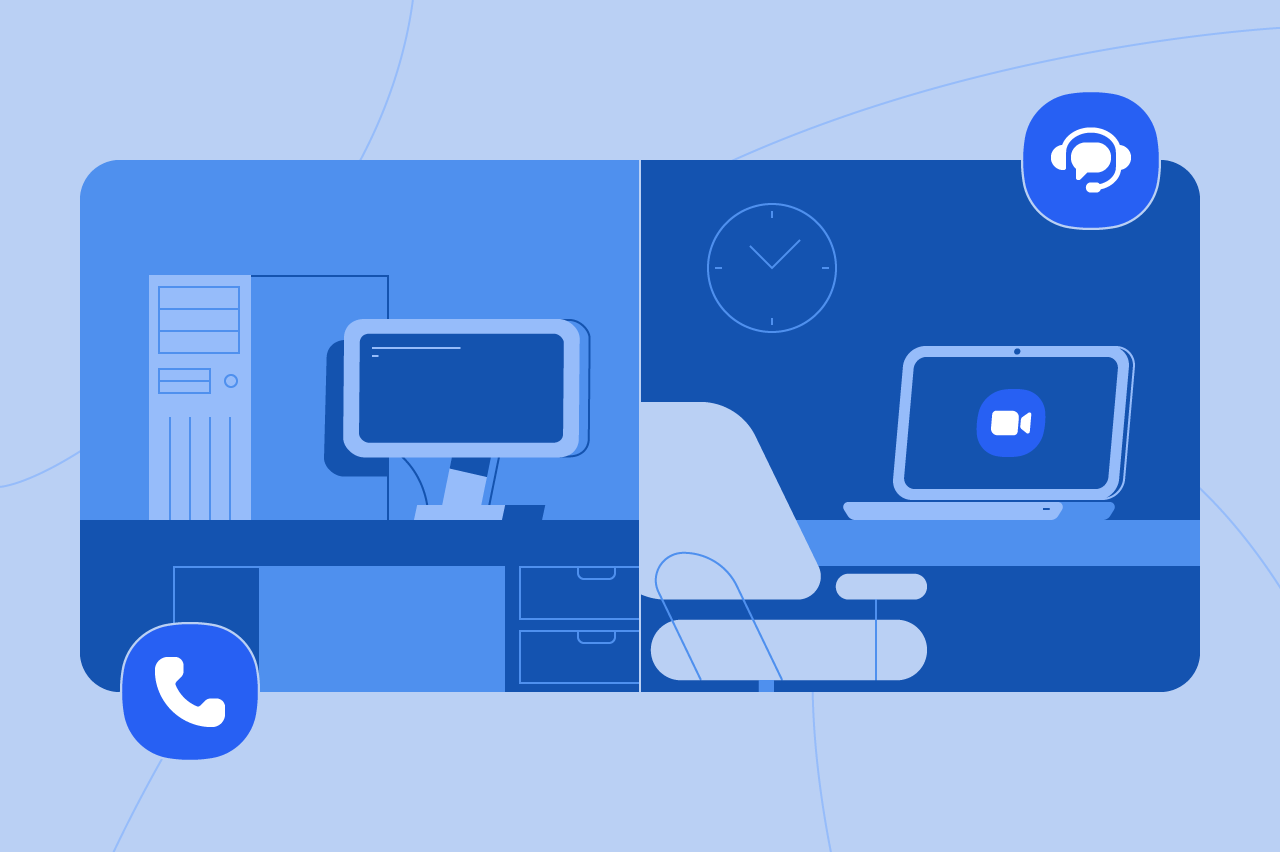
What is a cloud contact center and how to choose the best one
Explore what a cloud contact center is and how it's different from traditional contact center solutions. Explore features and tips to choose the right software.
Unlocking the secrets behind customer loyalty: Discover the key drivers that keep customers coming back for more.
Updated on October 06, 2023
Published on October 06, 2023


Companies seeking to safeguard and grow their revenue should focus on driving the loyalty of existing customers. The best businesses identify drivers of loyalty and execute loyalty and engagement strategies that include them. The reason is simple: Loyal customers outspend other customers.
Invesp reports that 49% of consumers spend more after joining a loyalty program. Additionally, the longer the relationship lasts, the more they spend. Repeat customers, on average, spend 67% more over three years than they did in the first six months after purchasing from a brand.
Creating an effective customer loyalty program requires tracking the impact of customer loyalty with key performance indicators (KPIs), such as loyalty member acquisition rate, customer retention rate, reward redemption, and customer lifetime value (CLTV). However, it’s also important to evaluate loyalty programs from the customer’s point of view to ensure customer satisfaction.
Before you win a consumer’s loyalty, you must earn their trust. Harvard Business Review reports that more than 80% of consumers consider trust when they make buying decisions. To build trust, be honest and transparent about your products, services, and company policies to avoid misunderstandings.
Also, implement processes and solutions that keep consumer data secure and private, and never use or distribute it to third parties without your customers’ consent.
Another way to build trust is through consistency. When consumers see that you routinely provide quality products and services, they’ll trust your business to continue to deliver when they return to purchase again.

One of the most important drivers of customer loyalty is rewards. A PwC survey found that 53% of consumers choose a business by considering value, and 30% specifically cite benefits, rewards, and privileges when they decide where to shop.
Therefore, implementing a loyalty program that offers rewards and helps customers see more value from their purchases will help you build your business.
A smart strategy is to make data-based loyalty program decisions so you can see what resonates with your customers and tailor rewards specifically to them.
A loyalty program administered successfully will significantly impact your company because they do more than purely generate revenue. They also bring in new business.
Your most loyal customers provide word-of-mouth advertising, telling friends and family about their experiences with your company. Furthermore, that information carries weight. Friends and family referrals are the most powerful influencers in building trust in products and services.
Building an emotional connection with your customers is another driver of customer loyalty. A survey of more than 19,000 consumers in the U.S. and UK found that emotional attachment is responsible for about 43% of perceived value, which influences purchasing decisions.
You build an emotional connection with your audience by telling your brand story and communicating what your brand stands for, as well as what your business does. Effective ways to tell your story are through testimonials, customer success articles, and blogging.
You can also build a connection and a sense of community by engaging with customers on social media. Interacting with consumers there can help you reduce churn and capture the attention of new customers.
Building loyalty is a process that never stops. Consumer behaviors evolve, the competition changes its tactics, and economic pressures may force you to rethink your customer engagement strategy. Always remain flexible and open to change so that you can find the most effective ways to increase loyalty.
Regardless of the circumstances, customer feedback is always an invaluable asset for staying current with consumer expectations. It can help set the direction for new initiatives, and responding to feedback and letting customers know they have a voice can be a powerful driver of loyalty.
Also, keep informed about innovative loyalty program solutions available to you, such as programs that gamify loyalty or use artificial intelligence (AI) to deliver highly personalized and interactive experiences.
Your employees who engage with customers, from the sales team to customer service, can be powerful drivers of customer loyalty. When your team creates great customer experiences, they increase the chances that the customer will make future purchases. A Salesforce survey found that 89% of consumers are more likely to return to a business that delivers positive CX. Conversely, it’s easy for customers to leave after a bad experience, with a Zoom study reporting that 59% of people would switch to a competitor after only one or two negative support experiences.
Remember, however, it takes training your team to meet customer expectations and build relationships that create loyal customers. Establish practices based on data from successful customer journeys and train your team to follow them.
You’ll also see more success if you create a positive company culture. Happy employees are more productive and perform better than their unhappy peers. So, showing your employees you care about them and recognizing and rewarding them for a job well done can go a long way to building customer loyalty.

Even when you build a CX strategy that includes all of the key drivers of customer loyalty, you must still find effective ways to measure customer satisfaction. You will gain insight by analyzing data. For example, you can use sales data associated with loyalty club members or that specifically included rewards redemption to gauge how effectively a promotion increased store traffic.
You can also evaluate loyalty to your brand overall with the Net Promoter Score® (NPS). Determining your business’s NPS is relatively simple. Ask customers just one question along the lines of, “How likely are you to recommend us to a colleague or friend?” Their answer gives you insights into how loyal your existing customers are to your company.
NPS also gives you a way to quantify that sentiment and track it over time. To find your NPS, count the people who respond a 9 or 10 on a 10-point scale or your “promoters.” Also, count up people who answer 6 or lower, your “detractors.” Then subtract detractors from promoters and divide by the total number of people you surveyed. Multiply by 100 to get your NPS represented as a percentage.
Whether you’re analyzing customer data after a promotion or campaign or seeing a change in NPS, look for indications that you need to enhance service quality, customer experiences, and the entire customer journey.

Incorporating the drivers of customer loyalty into your business strategy will help you build authentic relationships that last with consumers.
Customer engagement trends are moving away from one-time interactions to building ongoing relationships. A Freshworks survey found that 47% of consumers have higher expectations than they did a few years ago. Emerging drivers of customer loyalty include engagement on their preferred channels, live chat, and proactive, personalized service.
Want to learn more about the drivers of customer loyalty and how to prepare for the future of customer engagement? Contact us to learn about our customer experience solutions, including our omnichannel cloud contact center and intelligent AI chatbot, Zoom Virtual Agent.